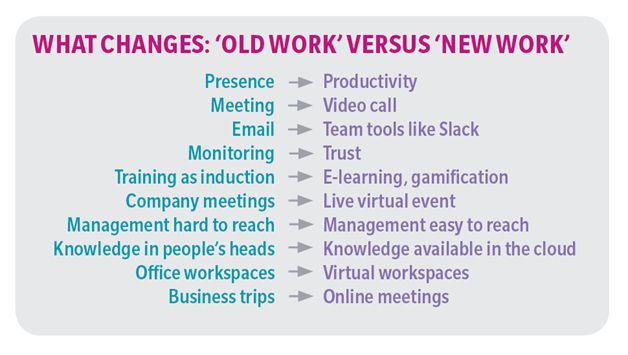7 Key Tools to Transform Your Business
By Nick Pegley, Konica Minolta –
The pandemic decidedly accelerated the necessity of a digital transformation strategy, with many businesses taking the opportunity to evaluate how they can improve performance through the use of digital technologies and new business models to drive organizational change. But getting into the details of what setting up a digitally mature business actually involves is not always clear.By integrating the technologies that businesses use (from communication and collaboration tools, to document and data management applications, to outsourcing content management services), an intelligent connected workplace (ICW) breaks down communication barriers, positioning you to transform your customers’ experience by fostering efficiency, innovation and growth. The key to success, however, lies in the effective implementation of a digital transformation strategy capable of driving true cultural change.
Thinking digitally
In principle, in this new digital workplace everyone still does what they always do. Information is collected, information is processed and information is exchanged. But with the increase in digitization, instead of a face-to-face conversation in the corridor, employees can agree to meet in the virtual break-room for a video call, or write short messages in the chat system. Project managers can log their work results directly in the wiki, set up tickets for customer concerns and product development requests, and hold meetings and pitches in video conferences. Clerical assistants, technical customer service agents and sales staff can also find digital services to enable their day-to-day processes.
But none of this should be a surprise – many of us are already working digitally. The difference is that we are now also starting to think digitally. For example, the transformation of the world of work also provides an opportunity to develop strategies and support the UN Sustainable Development Goals of the 2030 Agenda. If we make fewer business trips and the large offices shrink in size, it can make a significant contribution to reducing CO2 emissions and protecting our environment.
Technology: the digital transformation toolbox
For small and medium-sized businesses in particular, the more complex IT requirements of digital transformation, such as building new infrastructure or scaling up existing systems, can be difficult to implement. These organizations generally don’t have the required experts in-house, so need to use external consultants to provide not only a whole range of products and solutions, but also full service and support. In the same way, a lot of larger organizations are being faced with documents locked in filing cabinets back at the office while trying to work remotely.
This is where managed service providers like Konica Minolta come in. We can provide you with a digital toolbox comprised of the tools and technologies your employees need to do their jobs, tailored to your industry. We see the ICW as being reached when you have competency in seven key areas:
- CLOUD SERVICES: Cloud computing technology underpins digital transformation, giving people the freedom and flexibility to work from any location without the need to run and maintain their own infrastructure.
Click Here to Read the Rest
SOURCE Konica Minolta
Konica Minolta’s AccurioPress C14000 Installed at OneTouchPoint

